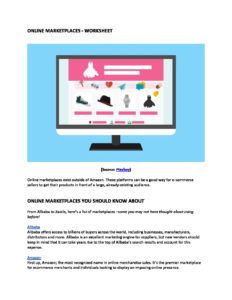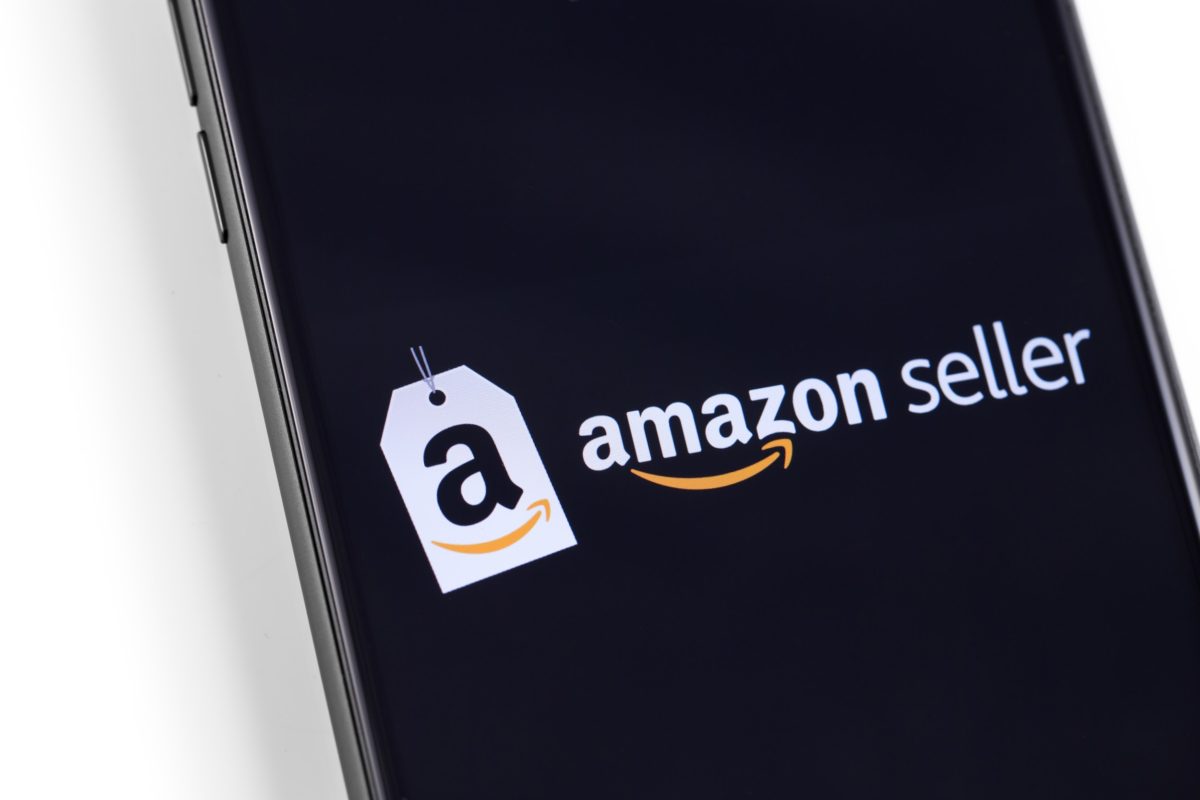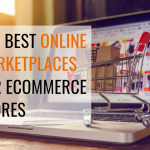If you have an Amazon store, or even just sell single items from time to time, then there’s a good chance that Amazon’s recent announcement has impacted you directly.
On March 17, 2020, Amazon announced a re-prioritization of products entering its fulfillment centers. This announcement came as a blow to most sellers and has left many feeling confused, frustrated, and not sure where to go next.
If you’ve been caught off guard by everything that’s happening lately, know that you’re not alone. Not many could have foreseen something quite like this, so don’t feel like you’ve somehow been left behind. You’re working right alongside fellow business owners, large and small. We’re all in this together.
While these are frustrating and confusing times for all of us, it doesn’t have to mean the end of your business. With the right approach, and the ability to be flexible over the next few weeks, you can still keep your business afloat, even during these challenging times.
With this in mind, let’s take a closer look at the Amazon update, and shine some light on what was said. Read on to see how and how you can weather these changes, setting up your business for success in the days to follow.
Amazon Suspends FBA Shipments
First up, let’s take a look at the letter to Amazon Sellers.
The memo is below. If you’d like to view it yourself, you will need to sign in with your Amazon Seller’s account information.
Here’s the note:
Dear seller,
We are closely monitoring the developments of COVID-19 and its impact on our customers, selling partners, and employees.
We are seeing increased online shopping, and as a result some products such as household staples and medical supplies are out of stock. With this in mind, we are temporarily prioritizing household staples, medical supplies, and other high-demand products coming into our fulfillment centers so that we can more quickly receive, restock, and deliver these products to customers.
For products other than these, we have temporarily disabled shipment creation. We are taking a similar approach with retail vendors.
This will be in effect today through April 5, 2020, and we will let you know once we resume regular operations. Shipments created before today will be received at fulfillment centers.
You can learn more about this on this Help page. Please note that Selling Partner Support does not have further guidance.
We understand this is a change to your business, and we did not take this decision lightly. We are working around the clock to increase capacity and yesterday announced that we are opening 100,000 new full- and part-time positions in our fulfillment centers across the US.
We appreciate your understanding as we prioritize the above products for our customers.
Thank you for your patience, and for participating in FBA.”
Although the Amazon update hinted at restoring regular operations by April 5, not a lot has changed. Currently, (as of April 6) the restrictions are still in place.
The memo was updated on March 27, 2020 stating they were able to broaden the list available for shipment creation, but on an item-by-item basis:
“Given our constrained capacity, we are doing this on an item-by-item basis.
We have updated the Restock Inventory page and Restock report in Seller
Central so you can check which products are eligible for shipment creation. We
consider many factors when determining eligibility, including high-demand
products customers need now; current inventory levels and inventory in transit;
fulfillment center capacity; and our ability to adhere to the latest health
guidelines. We will regularly update the Restock Inventory page and the
Restock report as capacity allows us to receive additional products.”
Finally, on March 30th, Amazon also announced they were waving two weeks of inventory storage fees for products stored in the United States, Canada, United Kingdom, Germany, France, Italy, Spain, Poland, and the Czech Republic. In addition, the April 15th long-term inventory storage fee is waived for the United States and Europe.
So, what does this mean for you as an Amazon seller?
While it makes sense that Amazon would start implementing measures to ensure that essential items take priority, for many e-commerce stores, the uncertainty surrounding these new measures has left them in a difficult position.
This announcement and the uncertainty surrounding it present two main problems for Amazon sellers, inventory and traffic.
Let’s take a look at some solutions for both of these issues now.
Find a Third-Party Logistics (3PL) Company
Not only is Amazon not accepting new inventory for non-essentials, but there are reports of their outbound shipments being delayed by as much as a month. So the first issue to address is supply; do you have inventory in a third-party logistics company, and if not, can you still get it from your manufacturer?
If you can get it from your manufacturer, the next hurdle is finding a third-party logistics company that is considered essential due to the product mix that it ships. Not all logistics companies fall under this category. Personally, with my business, I use Falcon Logistics. They’re great and are able to ship at equivalent speeds as Prime.
Barring that, another good move right now would be to send your products to a third-party warehouse. One option is ShipHero. They offer a great plan in which you simply connect your Amazon store, send them your inventory list, and watch your customers receive their orders on time.
Other options that might be worth checking into include ShipBob. Saddle Creek Logistic Services. Saddle Creek offers a network of distribution centers and claims 98% delivery within two days in the U.S. Other 3PL’s strive for the same type of service.
Your best option would be to get in touch with one of these companies directly and see what they can offer you right now.

Get our Online Marketplaces - Worksheet delivered right to your inbox.
Start Generating Traffic
Assuming you can get inventory into a third-party warehouse, the next hurdle is traffic.
While you won’t see the same exact traffic volume on Amazon, any smart seller with inventory outside of Amazon can easily switch to Fulfill by Merchant. Additionally, having inventory at a third-party warehouse also opens the doors to driving traffic to your website and selling direct.
You’ll also have the freedom to employ any marketing tactics or ad campaigns that you’d like. This includes partnering with other companies in your niche with non-competing products and doing email blasts.
Turn to Your Email List
Now is the time to connect with your email list. Ask them what they are looking for. Offer them some incentive to reply to you. Consider offering coupons in return, or entering each respondent into a competition. Then take their advice to heart, create some offerings for them and then ask for referrals in your next email campaign.
Remember that in these uncertain times, tact matters. Avoid pestering your prospects with incessant updates, instead remember: thoughtful and carefully worded emails are the best approach.
A key component of this list is your content marketing. Do the research for your customers. Provide them valuable information that drives them to your site. Then loop them in on your offerings, especially those that can help them during these difficult times.
A good example of content marketing is Saddle Creek. Their timely, relevant blog post directly addressed Amazon FBA and it positions them to be a leader in providing the alternative. Your products are visible through search engines. Take advantage of that and build your brand.
Speaking of branding, the email list is an excellent opportunity to build your brand awareness. The goal is to entice loyalty to you and your company rather than the distributor, Amazon. Send your email list links from your social media postings such as Instagram, Twitter, and Facebook. This will drive brand recognition and give your email list a chance to share your post with their networks on those platforms.
Consider Other Platforms
When it comes to e-commerce, it’s important to make sure you’re diversifying as much as possible, whenever possible. You can’t build a solid foundation on just one or two items. The business with multiple revenue streams has a greater advantage than one with only one or two fantastic products.
So how can you follow this advice? First, understand that Amazon isn’t the only game in town.
On March 23rd, eBay offered up to 50,000 free fixed-price listings through the end of April. While you do have to meet a few prerequisites, it is an excellent option for those sellers who may also use eBay as a sales channel. You can see the full details on eBay here.
For the right type of item, Etsy is a good choice. Anything hand-crafted, custom, unique, or vintage can be listed there. Many sellers cross-promote to this and similar sites. Use social media to your advantage here. This is also where a solid content marketing strategy can pay off. Instead of driving traffic directly to your Amazon store, drive them to a content site that you control. From there, they can be directed to either Amazon, Etsy, or some other platform.
Alibaba.com is another option. I know what you’re thinking. “You can’t be serious!” Before dismissing it outright, consider that the bad news is all in a very narrow window right now. Just six weeks ago, life was still “normal.” A lot can happen in a few weeks, not to mention 24 months.
Take the opportunity now while the opportunity is there, and you can win big down the road. The key to the Chinese market is in social networks and brand building. In an article published on March 31, 2020, FashionUnited detailed a long-term strategy for breaking into that market. It won’t be easy, but the barriers to entry are lower due to the beating that the economy has taken in the last couple of months. It’s worth a look.
Once you’ve established a presence on other platforms, don’t neglect your own website. Technology has made this extremely easy in recent years. Setting up an online e-commerce site is as easy as click and drop with canned elements. You don’t need to know any code at all.
Gone are the days when you had to hire a web developer to code everything from scratch, although you may still want to hire a designer to ensure that it all looks polished and put-together. If you’re just getting started, though, be sure to check out BigCommerce and Squarespace.
Other platforms to consider are Walmart, Jet, and Rakuten. For a list of e-commerce platforms for you to try, claim your FREE download today!
Complementary products should also be considered. While this is Marketing 101, sticking with the basics ensures you never have to go back to them. Stay with what works. Do you sell shoes? Sell socks along with them. Sell refurbished phones? Make sure you have an offering of earbuds. And if you’re selling solar panels, make sure you’re selling batteries alongside them.
See also: How to Grow Your Web-Based Business With Little or No Budget
The most important takeaway is diversification. When it comes to your products, the platforms you’re using, and your logistics company.
The first tactical step to protect your business and reputation is to get your items to a third-party warehouse or even a 3PL to deliver your products when Amazon has refused. Explore other platforms like Etsy and eBay, but don’t stop there. Walmart is looking to challenge Amazon in the coming years. They have a platform that is growing. Look at other markets like Alibaba (China) and Rakuten (Japan).
Look for opportunities to expand your market through your email list. Build your brand by sending your social media posts to your email list. Encourage them to share your posts on those platforms. Finally, expand your product mix so that your business appeals to more customers. Think about complementary items. Ask, “What else might my customers want in addition to this?”
By making the right moves now, you can ensure you are positioned for success when the economy turns again. Draw inspiration from the future, and apply it now. You’ll be glad that you did in a few months’ time.
Are you looking to find alternative e-commerce platforms? Make sure you get your FREE download and find some great alternatives to Amazon today.

Get our Online Marketplaces - Worksheet delivered right to your inbox.







